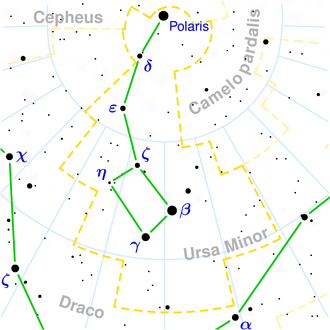NGC 5144
| Galaxy NGC 5144 |
|
|---|---|
|
|
|
| AladinLite | |
| Constellation | Little Bear |
|
Position equinox : J2000.0 , epoch : J2000.0 |
|
| Right ascension | 13 h 22 m 53.7 s |
| declination | + 70 ° 30 ′ 44 ″ |
| Appearance | |
| Morphological type | Sc C |
| Brightness (visual) | 12.7 mag 15.0 mag |
| Brightness (B-band) | 13.4 mag 16.0 mag |
| Angular expansion | 1.2 ′ × 0.8 ′ 0.2 ′ × 0.2 ′ |
| Surface brightness | 12.5 mag / arcmin² 11.4 mag / arcmin² |
| Physical data | |
| Redshift | 0.010457 +/- 0.000030 |
| Radial velocity | 3135 +/- 9 km / s |
|
Stroke distance v rad / H 0 |
(146 ± 10) · 10 6 ly (44.9 ± 3.1) Mpc |
| history | |
| discovery | Wilhelm Herschel |
| Discovery date | May 6, 1791 |
| Catalog names | |
| NGC 5144 • UGC 8420, 8420B • PGC 46742, 200298 • CGCG 336-008 • MCG + 12-13-005 • IRAS 13214 + 7046 • KUG 1321 + 707 • Mrk 256 • GC 3536 • H IV 70 • | |
NGC 5144 is a double galaxy made up of two gravitationally connected galaxies. NGC 5144A is a 12.7 likes bright spiral galaxy of Hubble type Sc; NGC 5144B , a 15.0 likes bright irregular galaxy from the Hubble type C. Both galaxies in the constellation Ursa Minor to find and about 146 million light-years from the Milky Way center.
The object was discovered on May 6, 1791 by Wilhelm Herschel with an 18.7-inch reflecting telescope, who described it as “cB, R, almost equally bright throughout, resembling a very ill defined planetary nebula, about 0.5 ′ diameter” .
